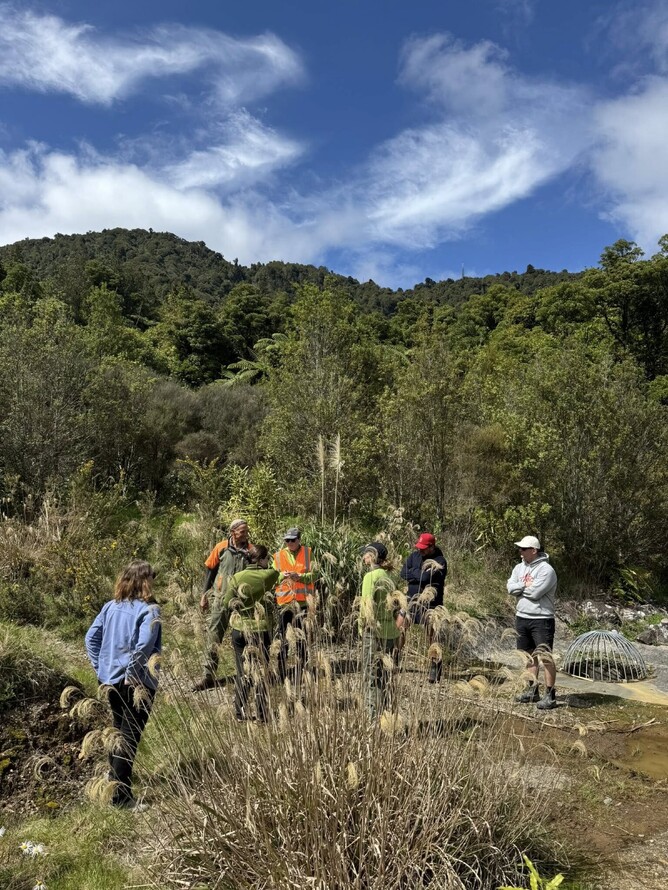Earlier this month, Ngāti Tumutumu, Waikato Regional Council and Department of Conservation met at the historic Tūi Mine site as part of their ongoing monitoring programme.
The agencies work together to maintain a long-term monitoring framework, with Ngāti Tumutumu leading the cultural monitoring component—an approach that combines mātauranga Māori with scientific techniques to assess the ongoing health of the environment.
Jill Taylor, Kaiwhakahaere of Ngāti Tumutumu Trust, compares cultural monitoring to regular doctor check ups.
“Like any living system, the maunga needs regular check-ins. Cultural monitoring helps us understand how the whenua and wai are responding over time, and whether there are any early signs of imbalance we need to address," she says.
Through the 1960s, copper, lead, and zinc sulphide were extracted from the Tūi Mine in Mt Te Aroha. Abandoned in 1973, an unstable dam threatened to release toxic by-products into local water supplies, making it one of the most contaminated sites in Aotearoa New Zealand. Government-funded remediation efforts were completed in 2013, and the area was deemed as no longer a risk to the town.
While the majority of contaminants were safely discharged during the 2013 works, a large wood stack remains that could pose a long-term risk of aging toxins seeping into the whenua and awa.
“We’ve noticed some of the rākau below the wood stack showing signs of stress. They tell us a story about the health of the soil and water beneath. For us, that’s part of listening to the maunga," she says.
Over the past four years, the Tumutumu Kaitiaki te Taiao team, the environmental project of Ngāti Tumutumu, has trialled small-scale planting plots around the Tūi Mine site to see which native species can thrive in the restored soils. So far, harakeke has shown the best resilience, though the team continues to investigate whether soil quality or browsing from introduced pest animals is the main limiting factor.
Cultural monitoring, pest plant removal, kauri ora and native plant restoration planting are part of their environmental workplan — all aimed at restoring the mauri of Maunga Te Aroha and strengthen the connection between people and place.
“For Ngāti Tumutumu, this mahi is more than monitoring. It’s our responsibility as kaitiaki to ensure the maunga can heal, and that future generations inherit a landscape that’s thriving once again."


